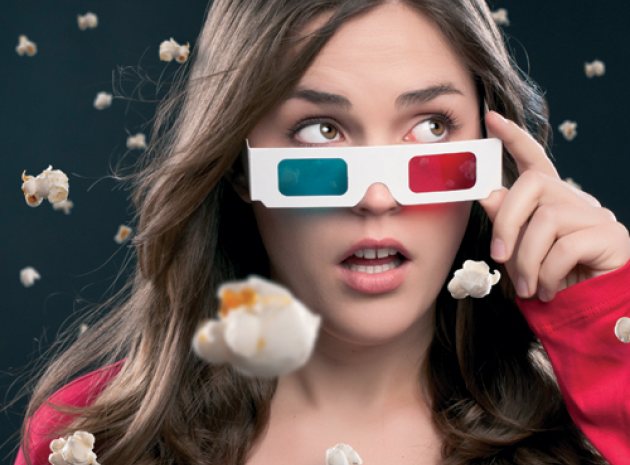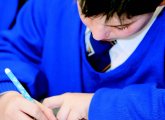Today you will…
Investigate how different ways of looking at pictures or watching films affect our thoughts, feelings and enjoyment.
Explore how the creative application of scientific ideas such as mri scans can be used to change the way people think and behave.
Explain how a consumer society has led to the need for ever more scientific advertising and filming techniques; and how the industry has responded affecting society as a whole.
Debate the ethical and moral implications of influencing society. is the ‘buy button’ a real possibility when marketing a product? can a scary film go too far?
“Neurocinematics, a phrase coined at Princeton University, is quickly becoming a ubiquitous tool in the cinema and advertising industries. The MRI brain scanning technique formerly only used for medical and research applications is branching out. Industry specialists have recognised the value in being able to first of all read and secondly manipulate our minds. Begging the question – how much of what we watch and listen to is becoming a form of mind control?”
All 32 of my year nines are silent – captivated. The young man who is usually the first to pass constructive comment or criticism on my performance seems to be racking his brains for something to say.
“Miss…”
“Yes?”
“Could they use it to make a film that even scares my brother!?”
“I don’t see why not, do you want to find out how?”
Starter activity
How do we use elements of science to influence us?
Distribute laminated 2D illusions onto tables set up for group work. Encourage pupils to discuss what they see. Provide additional information in a secret envelope to add intrigue (such as a question – do you see a vase or two faces?) and resources such as rulers to measure between parallel lines that appear to converge or diverge.
Introduce how psychologists have used inkblots to help interpret people’s thoughts and feelings. Do you think this is reliable? Pupils could make their own inkblots and discuss the different imagery they create.
Show pupils a film in 2D followed by the same film in 3D (see Additional Resources). Ask pupils to discuss whether 3D enhances your viewing. Explain how 3D is an illusion created inside your brain and the ways in which other illusions like the 2D and 3D ones you have seen can affect your perspective.

Main activities
1. What is neurocinematics?
Depending on the ability of the group either show a short video clip or distribute the New Scientist article on neurocinematics (see Additional Resources) – if computers are available ask pupils to work in pairs to come up with a short description of the technique based on their own research.
The idea of mirror neurons is widely believed to be responsible for empathy. When we see someone do something or have something done to them then exactly the same parts of the brain are activated in the observer as they are in the person actively experiencing it. If you watch someone eat a burger you may find yourself experiencing the taste; you may flinch if you see someone else stub his or her toe or fall over.
Tell pupils you are going to play a selection of images to them and ask them to write down how each one makes them feel or what it makes them think of (they should keep this to themselves).
Recommended images include those of play activities, sport, rural settings and landscapes, facial expressions, mathematical sums, maps, weather such as snow, rain, tornadoes, celebration (such as a medal podium), newborn babies, space images, school and workplace, spooky (such as a stereotypical haunted house), famous people (celebrities).
After pupils have recorded their feelings ask them to make predictions about the results they have collected. They can come up with these themselves or you can use prompts such as:
• Do you think other people may think the same as you?
• Do you think boys’ results may be different to girls’?
Pupils will then enjoy revealing their thoughts to each other and noticing the similarities and differences. An interesting activity is to compare girls’ responses with those of the boys’, which are frequently different due to the differences in the activities of mirror neurons in the male and female brains. Pupils can use the data to check their own hypotheses and come to some conclusions.
Extension work for gifted pupils could include a discussion of sample size and the validity of the conclusion. How would you select your sample and how would you design the study to make it a fair test? Which hypothesis would you test?
Further extension work includes sharing some of the numerous neuroscience and mirror neuron articles recently published in accessible literature such as on the BBC Science website, and in New Scientist and Scientific American. Do some of the pupils’ own observations correlate with the findings of neuroscientists conducting similar tests with MRI scanners? What are the limitations of their own technique and are there limitations to MRI?
2. Squaring up
This activity aims for pupils to work in a team to plan a marketing strategy based on the principles of neurocinematics.
Pupils can work in groups of four to six and should be told that they work for an advertising company and have a budget to spend on advertising a product. Each team is given a large image of a different, interesting and stimulating product, such as a car, toy, perfume, household appliance, computer games console or game, computer, clothing or shoes.
Learners are given an overall budget £OVERALL and prices for individual things they can spend money on e.g.
TV ad campaign (£X)
Newspaper campaign (£Y)
Advert at the start of a film at the
cinema in 3D (£Z)
Advert at the start of a film at the
cinema in 2D (£A)
Flyers (£B)
Roadside billboard (£C)
Internet advertising on
Facebook (£D)
Internet advertising on Google (£E)
Pupils should decide how to use their budget and justify their decisions based on their perceived effectiveness of the type of advertising for their product. They should be encouraged to think about the target audience – is this a product for a child, teenager or adult? Male or female? etc.
Pupils could present their work to the class in a variety of ways using PowerPoint, a poster, Prezi or even as a pitch filmed on video cameras. They should be able to demonstrate why they chose the advertising methods they did and how this will make it successful.
Home learning
Following the plenary debate pupils could produce their own list or mind map of pros and cons of neurocinematics. This could be led with questions or more open depending on the range of abilities within the group.
A cross curricular link to English and higher level debating skills could be achieved by asking pupils to prepare to take part in a debate:
“This house believes that to safeguard society the use of MRI scanning for non-medical purposes should be regulated.” For higher ability pupils the Neurocinematics and Advertising main activity could be used as a piece of independent work, with pupils given greater autonomy to choose a product and produce a budget with description and justification.
In order to encourage pupils to investigate other areas of science that impact on our daily lives they could complete an independent activity such as a worksheet that asks them to given an example of a specific piece of technology that is crucial to their daily life. Boxes on the worksheet should ask pupils to explain:
• why does it affect you?
• why do you think it was invented – was there a need for it?
• does it benefit society as a whole?
• how long do you think it has been available for?

Summary
During the plenary phase of the lesson the emphasis shifts to the ethical considerations of using scientific technology (MRI scans) to influence society.
The technology is currently used to make films scarier. Could this go too far and cause psychological harm? It is also used to influence purchasing choices. Pilot adverts can be played to a focus group and advertisements honed for effectiveness. Could people be coerced into buying something they do not want or need?
The technique has the potential to be used for political gain and may even have military applications in controlling suspects. It is feasible that the police could also use it to gain evidence.
How far is too far?
Pupils should be encouraged to have an open discussion and the teacher can observe and interact. Key questions could be posed or the debate left more open.
If you are following the framework for Assessing Pupils’ Progress (APP) then assessment from this lesson(s) can fulfill the criteria for Assessment Focus 2 ‘Understanding the Applications and Implications of Science’. It is similarly valuable as a How Science Works exercise.
There are many options for assessment, such as formative assessment of oral debate and scoring presentations or marking written work produced for the advertising activity. Pupils could be asked to provide informal peer assessment on the advertising activity, encouraging positive feedback and constructive criticism.
Info bar
Additional resources
• The lesson is based on the following new scientist article: tinyurl.com/2wr6x65 further useful resources include:
• Science of the movies -– mindsign neuromarketing: youtube.com/watch?v=rrkrjmha aiq&list=uubddmtltwocux2p7ns cbucw&index=2&feature=plcp"ti nyurl.com/chyh6sl
• New Scientist video: newscientist.com/video /605666708001-movies-and-thebrain. html"tinyurl.com/bnhb9gf
• NASA 3D Images of Mars: marsrover.nasa.gov/gallery /3d/
• NASA Create your own 3d images: stereo.gsfc.nasa.gov/ classroom/3d.shtml
• NASA Make your own 3d glasses instructions: stereo.gsfc.nasa. gov/classroom/glasses.shtml
• NASA 3D transmission live from space: nasa.gov/mission_pages/ station/research/news/esa_3dvi deo.html
• A variety of 3d video clips and instructions on how to make them: 3dvideoclips.net
About the author
Dr Joanna L. Rhodes M.Chem, D.Phil, MRSC is a teacher of science at Shelley College, Huddersfield










